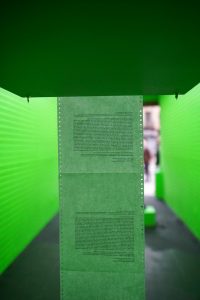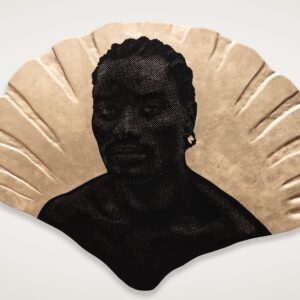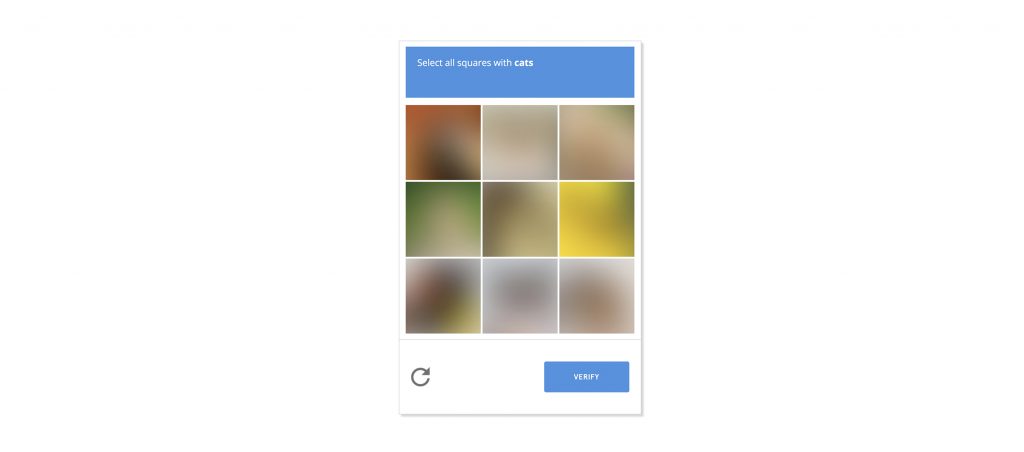
Humans Not Invited ©Roehrs Boetsch and- the artist
Working on the computer all day, New York-based artist Damjanski has noticed how his life is currently largely taking place around black boxes. With black boxes, he refers to objects or systems that can be traced back to input / output operating schemes, the operation of which, however, remains largely in the darkness of the internal machine. Although this description perfectly recomposes what are the screen-based technologies that now populate our domestic environments, the artist does not refer exclusively to them. It is in the same way that he decodes subjects and interactions that he encounters in his daily life – in society, politics, affects, bodies.
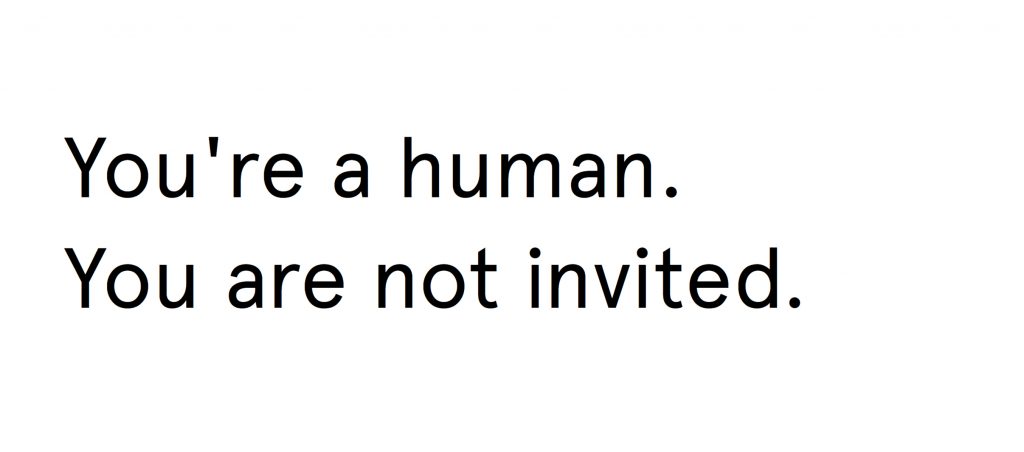
Humans Not Invited ©Roehrs Boetsch and- the artist
The installation Humans Not Invited – IRL is a physical manifestation of the permanently available online performance, Humans Not Invited (humansnotinvited.com), which is a reversed CAPTCHA that filters out humans and is only accessible to bots. They are the only ones who can read the blurred images of the artworks and thus pass through the entrance portal of the website. The installation consists of a cordless mouse and a mouse pad, placed outside the entrance of Roehrs & Boetsch’s gallery space. On the front window, a back-projection displays the software interface in an enlarged format. In order to gain access to the gallery, visitors have to solve the CAPTCHA. However, the software is designed so that it’s impossible to be solved by a human being, while instead decipherable by bots.
The term CAPTCHA (for Completely Automated Public Turing Test To Tell Computers and Humans Apart) was coined in 2000 by Luis von Ahn, Manuel Blum, Nicholas Hopper and John Langford of Carnegie Mellon University. The Turing test was devised by the computer pioneer Alan Turing in 1950 to determine a machine’s ability to think; A CAPTCHA is a form of inverted Turing test, since it is instead generated by a computer rather than a human being. The most common application is to protect websites from bot attacks, generating and classifying tests that humans can presumably pass, but current computer programs fail. Since its development, this form of user identification has been shown to be vulnerable by cybercriminals and has raised considerable criticism for its discriminatory approach towards people with impaired vision and hearing.
Health protection measures to limit the spread of the COVID-19 virus, adopted by governments on a global scale, have temporarily limited access to public spaces, confining human interactions on the web. With Humans Not Invited – IRL, Damjanski reconstructs the user’s online identification experience in the physical space, however depriving him of the possibility of success. Facing the rapid progress of artificial intelligence in respect to the human individual’s capabilities, the installation reveals the limits of human interactions even in the physical space, at a time when they themselves are being restricted by government-controlled mechanisms. In this way, the artist brings to light the normalization of both physical and virtual experience, carried out by a supervisory authority whose interior of the black box often remains, for most people, unknowable.
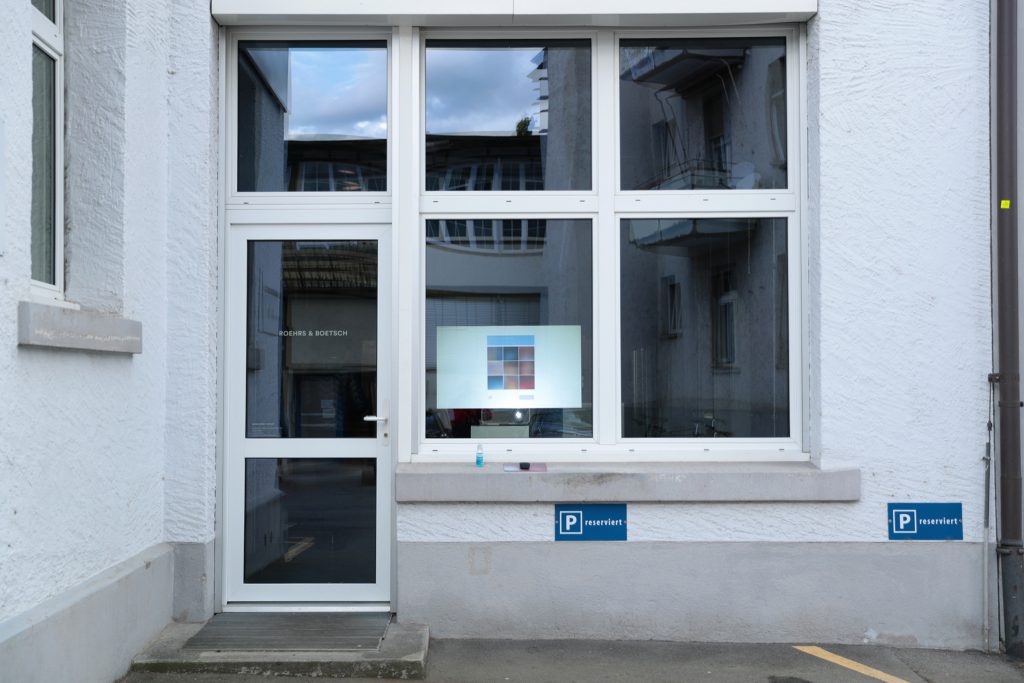
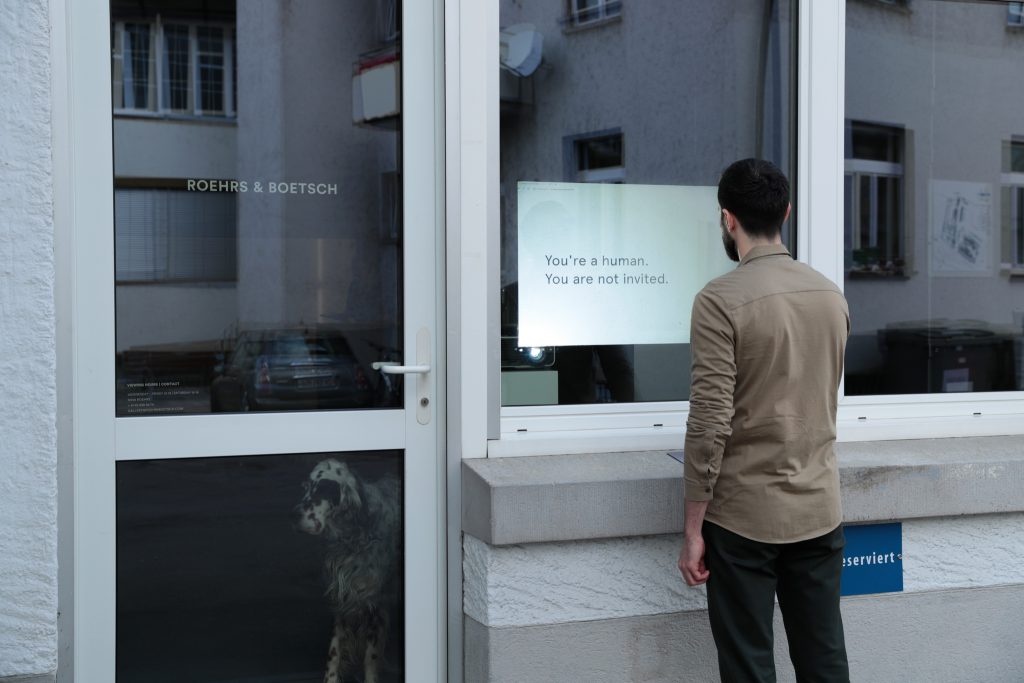
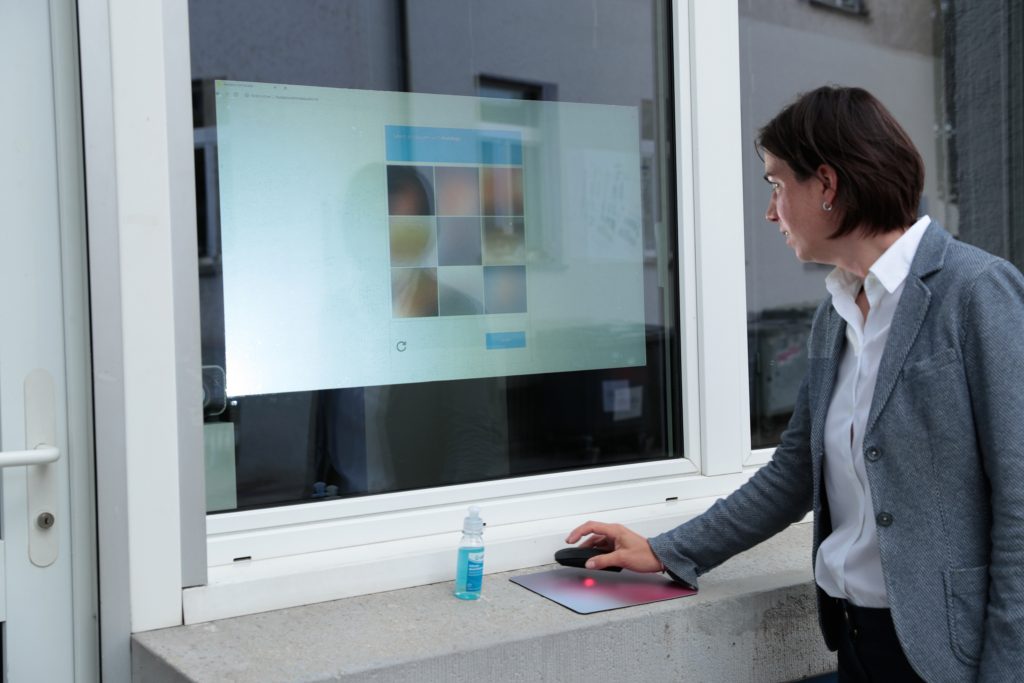
DAMJANSKI: HUMANS NOT INVITED – IRL 29. 4. – 30. 4. 2020 Roehrs & Boetsch Gallery roehrsboetsch.com
DAMJANSKI is a Yugoslavian artist living in a browser. Concerned with themes of power, poetry and participation, he integrates field research into an exploration of illogical connections in everyday life. “Someone came by and asked me why? I answered why not? The person looked at me confused which made me a little worried and I so also became confused.” Born in Sarajevo (B&H), he grew up in Hamburg amongst everything topical and is now based in New York. Searching for decision spots of wonder and unlearning his conceptual work draws on the idea of the collective. “We kept staring at each other for quite a while. Then I thought of talking about my continuing investigation of black box approaches in our everyday lives.” Damjanski is a co-founder and member of the artist collective Do Something Good, which focuses on realizing interactive experiences that arise at the cross section of art and technology. In 2018, Do Something Good launched the MoMAR art project, a gallery concept aimed at democratizing physical exhibition spaces, art institutions and curatorial processes within New York’s Museum of Modern Art. His interactive installations, browser-based art, and web-based applications deploy solutionism to unveil screen structures of the present. In July 2019, his latest piece “Bye Bye Camera”, a camera application for the post-human era which erases human motifs from everyday photography, was published. “Suddenly, I felt less confused. Yet, I was still staring.”
Statement generated by damjanskAi damjanski.com
